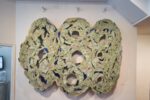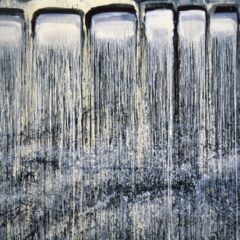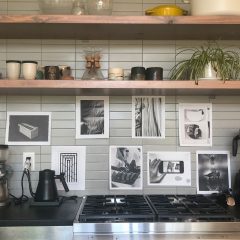The Print Center’s 84th Annual International Competition: Photography, one of the nation’s oldest juried exhibitions of its kind, has managed to stay relevant yet another year with the help of guest curator Ingrid Schaffner. Schaffner, the senior curator at the Institute of Contemporary Art in Philadelphia, has brought together a group of 40 artists out of a pool of 550 (not an easy task). The result: a pastiche of work investigating a myriad of themes such as dystopic landscapes, melancholia, communal living and the creative process. Schaffner describes the exhibit as a “picture show” and appropriately likens the viewing experience to that of a “whack zoetrope”.
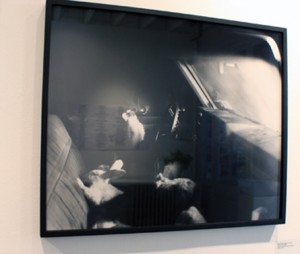
The exhibit is heavily laden with, again in Schaffner’s words, “impure landscapes.” There is an overwhelming amount of landscape photography that speaks to the disconnect between man-made construction and nature, either through military domination, pollution or suburban sprawl. The first floor of the show is overly dominated by animal-themed photographs: deer and rabbits populate, a motif that has been abused in the art-world, so much so that it has lost its punch. However, like it or not the theme of displaced animals has cultural relevancy as we see our natural habitats disappear and animals continually searching for safety.
Emma Wilcox’s “Father’s Day” is one of the many photographs of animals in this exhibit. Wilcox is the recipient of both the Print Center’s Solo Exhibition award and the Callan/McNamara Award. Wilcox employs a mysterious Joel-Peter Witkin-esque quality to her silver gelatin prints. Using a tableau of rabbits lifelessly strewn on the front seat of a car, she inverts nature by bringing it to the interior of the automobile. She dramatically uses a heavy angle, Film Noir lighting technique to light her subject matter in the misty night. Kudos, Emma Wilcox, for your dark vision.
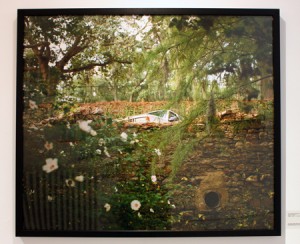
Also standing out in the plethora of landscape photography is Jon Horvath’s “White Car”. Horvath is the recipient of the prestigious Philadelphia Museum of Art Purchase Award, and rightfully so. His ominous photograph of a car nestled deep in the landscape gives his image and a downright creepy edge. The car is lurking and the vantage point is very low, as if the viewer is either hiding or calling out for help. Horvath creates an ambiguous yet cautionary tale about man’s presence in nature.
Craft is one of the unplanned themes of the exhibit. One cannot help but be distracted by the lack thereof in much of the work. Schaffner releases her responsibility of the quality of the photographs in her Juror’s Statement, for she was unable to gauge image quality when choosing the work online. Because of the copious amount of photographic flaws; obvious tears, dirt, dust, fallen framing spacers and blurry pixilated images, one cannot help but think about photography as a medium in and of itself.
The craft dilemma in this show highlighted the impeccable craft of Jerry Birchfield’s piece “Support”. His clean, sparse pigment print of a single sheet of white paper pinned to the wall was not only poignant, but filled with timely metaphor. He presents a complex duality in a simple metaphor: the blank page, the anxiety of “where to begin?” and also the calm of a clean slate. It spoke not only to the personal act of creating, but also to a larger cultural relevance: don’t we all wish we could “wipe the slate clean”? His illusionist piece conjures a Barthesian idea that “a photograph is always invisible: it is not [the photograph] that we see”.
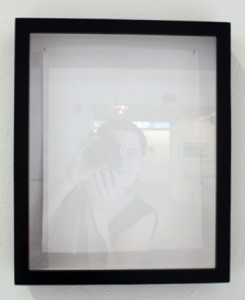
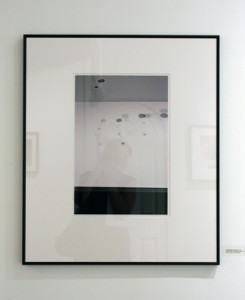
Another cleverly executed work was Jay Pastelak’s “Calder Mobile Hirschhorn Museum 04”. Pastelak, via Calder, documents the museum space by recording the intangible: in this case, the shadows created by a mobile, which is purposely not shown in the frame. He eliminates the art object to expose its hidden elements. By photographing the museum space and not the piece, Pastelak makes one question the processes of viewing art.
There is an abundance of tantalizing work and something for everyone at this excitingly diverse juried exhibition. Be sure not to miss the 84th Annual International Competition: Photography at The Print Center, which is on view until July 24, 2010.



